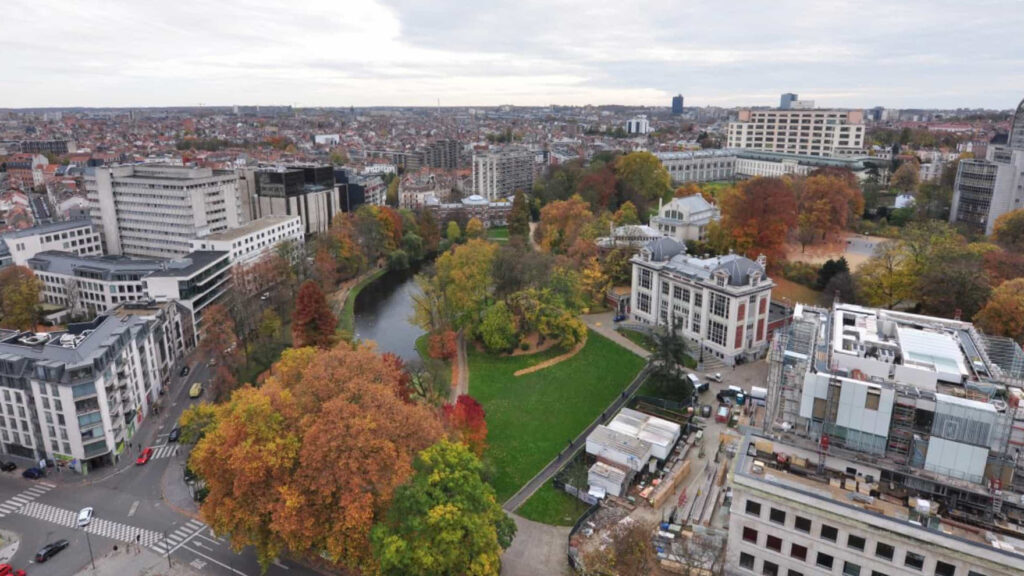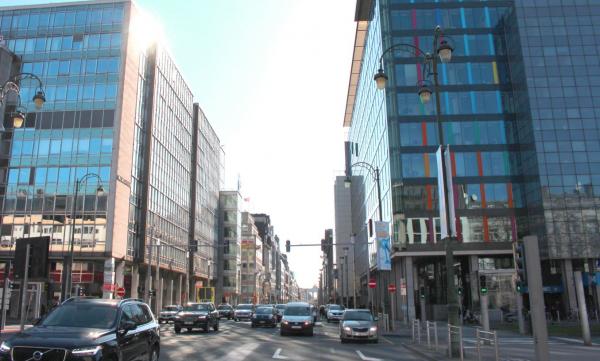After the authorities' initial plans for the European Quarter were shut down by the public, the Brussels Regional Government now aims to transform its EU Quarter into "a vibrant and mixed neighbourhood" within the next 10 to 20 years.
The Brussels Government wants to make sure that the EU district does not become, or remain, a "bubble" for those working at the international institutions located in the area, but becomes a vibrant part of the city where all Brussels residents feel at home.
"We are turning the page for the area, and together with the City of Brussels and the municipalities, we will build a future-oriented European Quarter from tomorrow," said State Secretary for Urbanism Pascal Smet at a press conference on Thursday.
"No more tabula rasa every 30 years: the European Quarter deserves better," he said. "More housing, more facilities and a greener public space will shape this district in the coming years.”
In addition to those, Brussels' Minister-President Rudi Vervoort also stressed that a high-quality public space, controlled building heights and an unchanged density will also be taken into account. "We now count on the real estate sector to listen to this clear call, because together we will shape this district."
Nine basic principles
Vervoort stressed that the Government will remain strict in granting urban planning permits that have been applied for, and is proposing a 'Shared Vision,' based on nine principles:
Firstly, the Maelbeek area between the City centre and the Schuman roundabout will be upgraded, Smet stressed. "The area has a lot of potential, but it is just not being used."

Credit: Cabinet of Brussels State Secretary for Urbanism Pascal Smet
Secondly, the current density of the neighbourhood must be maintained, and the density of the courtyards of residential blocks should be reduced. The ground floors should also be activated by creating an interaction with public space and the space within the residential blocks. "Certain changes are possible, but only if they can be really well-integrated into the district," said Smet.
A third principle is respecting existing buildings to reduce the carbon balance of real estate operations and nuisance caused by construction sites. "We do not want to demolish buildings, but renovate and repurpose them. Demolition of buildings will be the expectation. A heritage study is also ongoing to see which post-war buildings we should keep as they are."
Converting run-down office projects into residential buildings and reintroducing a diverse housing supply will be the fourth point of attention. "The EU district is part of the city, and it is very important that the inhabitants also understand that," he added. "Areas such as Place du Luxembourg or Place de Londres can feel like a whole other world, but it is just a part of Brussels."
Related News
- Brussels new 'StamEuropa' aims to bring people together in European Quarter
- What happens to the European quarter if the Commission downsizes?
- EU quarter residents want the EC to help improve neighbourhood
Fifth, the Government will make office buildings contribute more to the neighbourhood animation and liveability by providing commercial and service functions on the ground floors and by diversifying the temporary use of vacant buildings. "Office buildings must become part of the neighbourhood, and not be perceived as separate from it."
Improving the offer of neighbourhood services is an important sixth factor, stressed Smet. "Diversity is so important, which is why we want to reintroduce diversified housing, meaning that buildings will have more than one function."
A seventh principle is structuring and opening up the district to connect it to the surrounding neighbourhoods and to encourage interaction between the neighbourhoods. "An axis of squares will be created between Place Saint Josse and Place Fernand Cocq, as well as a cultural axis and an axis of parks."

Credit: Cabinet of Brussels State Secretary for Urbanism Pascal Smet
As an eighth point, nuisance from transit traffic will be limited and more space for soft mobility will be created. "This also involves the plans to go from three to two lanes on the Rue Belliard."
And lastly, transform the streets into pleasant and green public spaces, in this way reinforcing the streetscape identity. "We want to get everything on the same page, to make the EU quarter a neighbourhood where everyone likes to live, work and hang around," said Brussels City Councillor for Urbanism and Public Space Ans Persoons.
The City of Brussels recently adopted guidelines for the part of the EU district located in Brussels 1000, namely the Leopold Quarter. These will give direction to future building projects and stimulate residential projects. Only about 1,000 people live in the Leopold Quarter now, as most of the buildings are office spaces.
"But to make living there attractive again, we also need to tackle the quality of the public space," Persoons said. "People do not want to live in a grey and mineral neighbourhood. Due to an excess of underground parking, the greening and redevelopment potential of this district is enormous. A potential that the City of Brussels will fully invest in in the coming years.”

